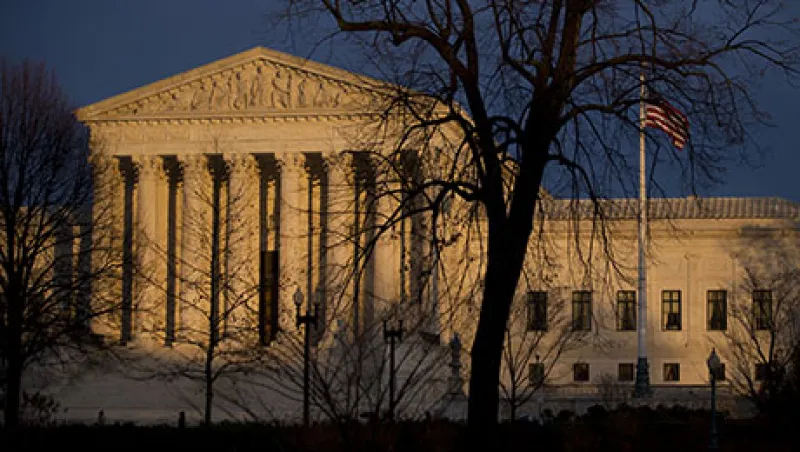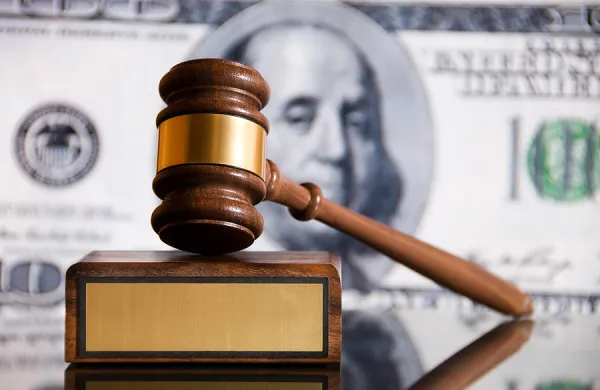In oral arguments at the Supreme Court Tuesday morning, Justice Sonia Sotomayor didn’t waste any time asking a question that had been on many observers’ minds since the highest court in the U.S. agreed to hear Tibble v. Edison International, a suit that centers on whether a 401(k) plan fiduciary has the duty to continually monitor the expenses and performance of the funds in which it is invested.
“One of the things I was looking for ... is some evidence as to what exactly that monitoring entails,” Justice Sotomayor said.
That’s something many people — the other justices, Edison, industry groups, legal experts and journalists alike — have also been looking for since the Supreme Court took up the case a year ago. Do the petitioners believe fiduciaries are expected to scour the markets for cheaper options every time they assess their funds? Or, as the U.S. Court of Appeals for the Ninth Circuit ruled, must there be a critical change to a fund that triggers the reevaluation?
The Supreme Court justices didn’t explicitly agree to take up those questions, and it wasn’t clear before Tuesday’s hour-long session that they would discuss anything more than the statute of limitations. The suit was brought in 2007 by participants in California public utility holding company Edison International’s 401(k) plan who felt the company had imprudently invested in high-cost retail mutual funds when it could have chosen nearly identical institutional funds. As the case wound through the courts, Edison was found to have breached its duties with regard to three funds it added to plans in 1999 and three others added in 2002. The U.S. District Court for the Central District of California awarded damages for the 2002 funds, but found that those added in 1999 were outside ERISA’s six-year statute of limitations, and the Ninth Circuit agreed. The specific question the Supreme Court agreed to take on was whether the lower courts’ reading of the statute was valid or, as the petitioners argue, the six-year window resets whenever the allegedly imprudent investment is reviewed and not removed from the 401(k) plan.
But that didn’t stop the justices from discussing the merits of the case at length on Tuesday and indicating that they may side with the petitioners, reversing and remanding the suit to the Ninth Circuit with directions to let the plan participants revive some of their arguments.
Several of the justices seemed most concerned with what a fiduciary’s duty to continue monitoring 401(k) plan investments would look like in practice, seeming to take for granted the idea that Edison did in fact have that duty. The petitioners’ attorney, David Frederick of Washington-based Kellogg, Huber, Hansen, Todd, Evans & Figel, who has argued more than 40 appeals before the Supreme Court, recommended that the court specify that plan managers should be evaluating the expenses and performance of funds on a regular basis, but Sotomayor said she wasn’t ready to draw that line in the sand.
Justice Stephen Breyer, too, seemed to think that question was best left for the lower court to decide. “[T]here is a problem with me suddenly, or any of us, describing this fiduciary duty, the nature of it, whether it’s violated here or not,” he explained, noting that the specific obligations of the plan sponsor had not come up in such a specific way earlier in the case.
If the justices do send Tibble v. Edison back to the Ninth Circuit, that decision alone could have widespread consequences for 401(k) plan sponsors and fiduciaries. The mere fact that the case reached the Supreme Court — the first such dispute to do so — has industry groups like the Securities Industry and Financial Market Association, which has supported Edison in the present case, and the ESOP Association on alert for increased scrutiny and litigation. The justices’ willingness to entertain the idea that fiduciaries may be liable for allegedly imprudent decisions more than six years after they’re made has led some to fear for the future of 401(k)s.
“If they take the slippery slope all the way down on that, you could have a situation in which fiduciary investment committees reviewing those investments would have this almost 24/7 obligation to determine whether the investments they’re in are proper or not,” says Michael Graham, a Chicago-based partner at McDermott Will & Emery and co-chair of his firm’s ERISA litigation group.
Graham says the case could be dangerous for both sides. If the justices side with the petitioners, in addition to the potential to increase litigation, it would mean additional obligations for administrators — both increasing the time and effort required to manage funds and raising costs. If they go in the opposite direction, agreeing with the Ninth Circuit that a critical change must be made to a fund to trigger the review requirement, it could “severely hamper” plaintiffs’ ability to file claims against problematic investments, according to Graham.
All along, one of the most significant elements of this case has been the involvement of the Obama administration. On Tuesday, Assistant to the Solicitor General Nicole Saharsky emphasized the government’s position in support of Tibble and the idea that plan fiduciaries have an ongoing duty to monitor their funds. But in the end, it may not matter so much what the justices (or the Ninth Circuit, should the case be remanded) decide, because the Department of Labor is creating new rules that may give plan managers an even bigger headache. The rules, which President Obama officially endorsed Monday, will create a new fiduciary standard directing brokers to make recommendations for plans that are not only “suitable” but also in an investor’s “best interest.” Whereas many in the industry warn of the end of mutual fund inclusion in 401(k)s if the courts side with Tibble, many are also sounding the alarm about these new rules, suggesting they will only serve to limit the options available for investors.
The Supreme Court justices will deliver their decision on Tibble v. Edison by June. In the meantime, the 401(k) world has plenty else to adjust to.






